Hvítserkur
Iceland
The Hvítserkur rock formation off the northern coast of Iceland is enchanting and provides a unique backdrop, especially during moonlight or aurora borealis.
The Hvítserkur rock formation off the northern coast of Iceland is enchanting and provides a unique backdrop, especially during moonlight or aurora borealis.
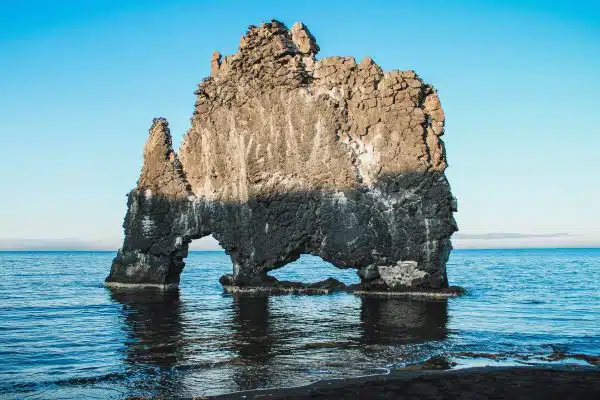
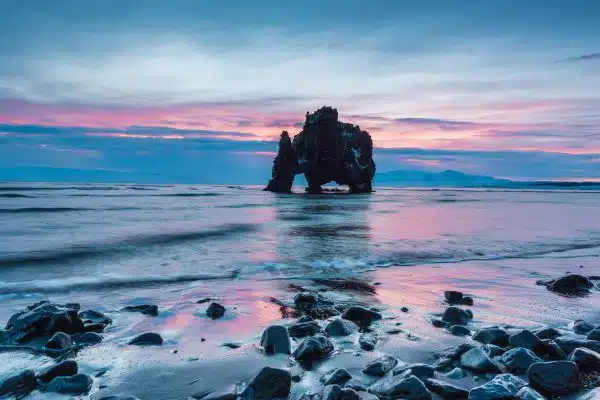
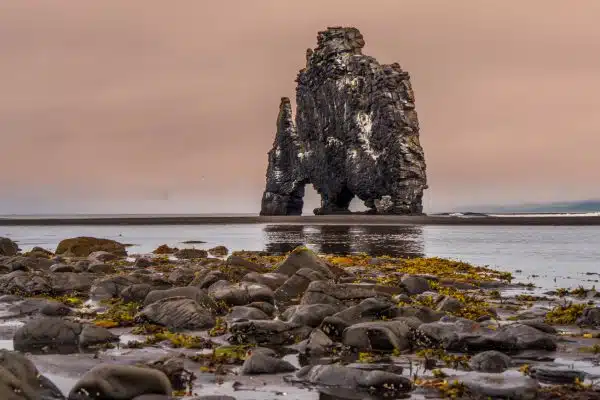
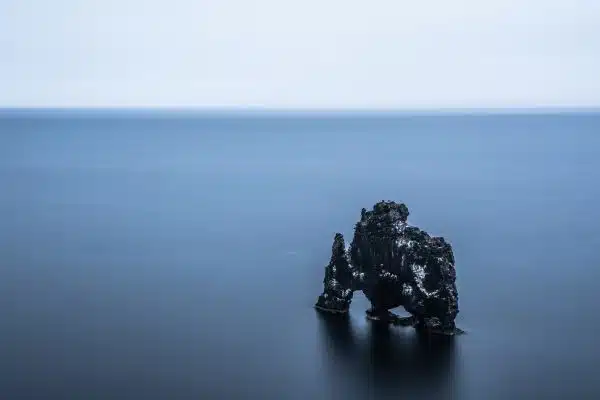
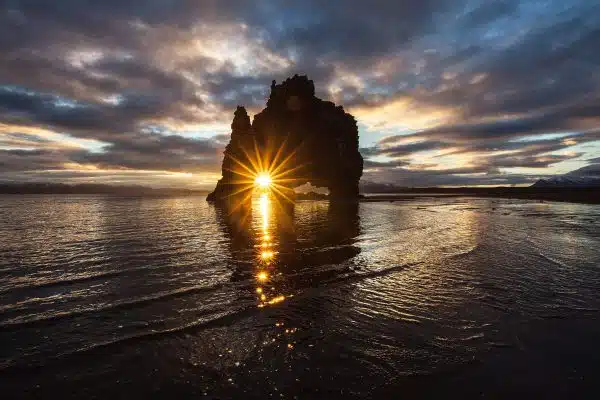
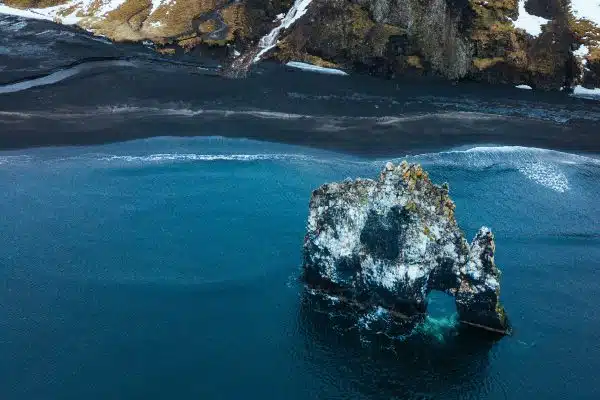
On the eastern coast of the Vatnsnes peninsula in Iceland, in the Gulf of Hunafloi, Hvítserkur rises out of the sea. The constant movement of the seawater surrounding the rock has eroded parts of the stone, giving it its present shape. 15 meters high and wide, but barely two meters thick is the formation. Is it an elephant, a dinosaur or a troll?
Hvítserkur, a basalt rock, with many names. One name for the rock is "drinking dinosaur", based on its stature. Others see in the formation an elephant or a rhinoceros leaning with its head to the water.
According to an Icelandic legend, however, Hvítserkur was a troll who wanted to tear out the bells of Þingeyraklaustur Monastery. In his rage and determination, he did not notice how the sun was slowly rising. So he was petrified for eternity by the first rays of the sun. In Icelandic folklore, trolls are found a lot. They are human-like, rough and often very large. But first of all they are nocturnal. Every time they come into contact with sunlight, they turn to stone. Because of this folklore, many rock formations in Iceland are attributed to trolls.
Hvítserkur is located off the eastern coast of Iceland's Vatnsnes Peninsula in the Gulf of Hunafloi (Húnafjörður). The unusual formation was created by erosion. The constantly flowing seawater has eaten three large holes in the rock formed by volcanic eruptions. The basalt formation has a height and width of 15 meters each, but it is only about one to two meters thick. Because of the difference in height and thickness, the formation is particularly vulnerable to the constant movement of water. In 1955, residents of the nearby village raised money to close the right hole, between the two legs of the troll, with concrete. The feet of the rock were also fixed and supported with concrete, so that the formation now stands more securely. Hvítserkur is a popular breeding ground for various bird species, which have given the rock its name with the help of their excrement. Hvítserkur translates into German as "white coat," alluding to the white sheen created by the birds' excrement.
Hvítserkur can be reached via road 711. From 711, a somewhat smaller road leads to a free parking lot with benches and tables. From the parking lot there is an easy footpath to a viewing platform. If you want to get closer to the cliff, there is a somewhat steeper dirt road that takes you to the beach. Here, however, you have to be careful. Especially in summer, there are often many Arctic terns, Iceland's national birds, on the path, some of which penetratingly try to make your way difficult. So it is worth packing an umbrella or something similar to scare the swallows away. To have a closer look at the formation, it is also a good idea to wait for the low tide. During this time you can admire the rock from close range.
The basalt rock is also popular with photographers. The reflections of moonlight and sunlight, as well as the Aurora Borealis on the shallow water, give the rock formation an extraordinary flair.
You want to experience the unique magic of Iceland? Then join us on a 9 days tour through the land of volcanoes, rocks, trolls and elves.
In 1990, Hvítserkur was depicted on the Icelandic 25 kroner stamp.
Sign up for our newsletter to get €50 off your next adventure (with full payment). We'll keep you updated, send you travel inspiration and exclusive offers.
Save on our unique trips, including our Namibia trip, with up to 300,-€ Discount.
👫✈️ Unique friends campaign 🚨: Book together with a friend and we'll double your discount - for both of you! 🎉
Offer only until on January 31! ⏰
Sign up now for the TripLegend newsletter for free and get 50€ off your first booking (with full payment). Get travel inspiration and adventure ideas delivered to your inbox.
Our most popular adventures
Africa
Asia
satisfy wanderlust
Discover the world
TripLegend
How it works